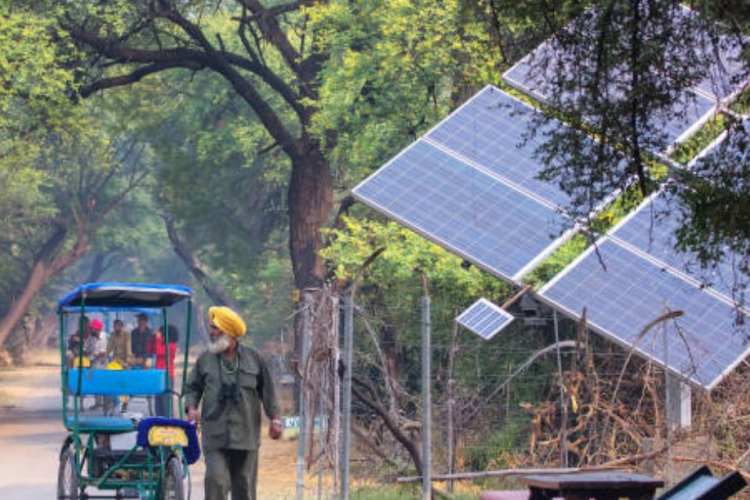India’s net zero push: Climate change is now the central risk facing humanity, forcing countries to adopt strategies that balance growth with sustainability. India, among the nations most vulnerable to extreme weather, has set itself a demanding course—both in terms of near-term mitigation and long-term adaptation.
New Delhi has pledged to cut projected carbon emissions by one billion tonnes by 2030 and to reduce the carbon intensity of GDP by 45% from 2005 levels. At COP26, it went further by promising 500 GW of non-fossil fuel power capacity by 2030—well above its Paris Agreement pledges. As the world’s third-largest emitter and fastest-growing major economy, India’s stance marks a recognition that growth need not come at the cost of unchecked emissions.
READ | Ukraine peace hinges on Europe scaling back militarisation
Progress and remaining gaps
Independent modelling by the Council on Energy, Environment and Water (CEEW) and the Alliance for an Energy Efficient Economy (AEEE) suggests that India may reduce emission intensity by 48–57% by 2030, outpacing its official targets. But net zero by 2070, the government’s stated aim, will require more than momentum. It will need systemic reforms—carbon pricing, power tariff rationalisation, fiscal support for clean technologies, and lifestyle changes to curb demand.
Research published in Energy and Climate Change indicates that India’s next round of nationally determined contributions (NDCs) could set steeper targets: a 55–66% cut in emissions intensity and a 60–68% share of non-fossil capacity by 2035. Achieving this balance would allow India to grow while staying aligned with global climate priorities.
The renewable energy push
Solar power illustrates both India’s progress and its challenges. Once prohibitively expensive, solar is now the cheapest energy source in history. Gujarat and Rajasthan have scaled up adoption successfully, yet the benefits remain uneven. Transmission bottlenecks, policy uncertainty, and weak state-level action have prevented wider penetration. For India’s renewable targets to translate into household and industrial impact, local bodies must adopt decentralised plans that match regional resource endowments.
India’s renewable energy story is a mix of remarkable progress and structural weaknesses. Installed capacity from non-fossil sources has already crossed 190 GW, making up nearly 44% of the power mix, ahead of schedule. Yet the pace of fresh additions has slowed, with solar installations falling short of annual targets and wind power struggling under land and transmission bottlenecks.
Investment flows remain concentrated in a few states, leaving others trailing. The policy thrust is clear, but unless issues of grid stability, financial health of distribution companies, and uneven state-level execution are addressed, India’s renewable ambitions will continue to be aspirational rather than transformational.
Technology alone cannot deliver deep decarbonisation and net zero goals. India’s Mission LiFE emphasises lifestyle changes—reduced reliance on private vehicles, efficient appliances, and smarter residential energy use. Such behavioural shifts could lower emissions by up to 10% by 2050 compared with a business-as-usual path, while also easing pressure on land and natural resources. Without these changes, rapid growth could push absolute emissions 63% higher by 2070, despite efficiency gains.
Tariff and finance reforms
India’s net zero transition will not be smooth without tariff rationalisation. Current cross-subsidies distort consumption: industries face high power costs while households enjoy artificially low rates. A more balanced structure could encourage electrification in industry, boost clean energy adoption, and make rooftop solar attractive for households.
Equally critical is climate finance. International mechanisms like the Green Climate Fund remain inadequate. Domestic finance—through green bonds, blended models, and public-private partnerships—must be scaled up. Sub-national governments need easier access to capital, and private investors must be drawn in through tax incentives and de-risking instruments.
The race to limit global warming to 1.5°C has made clear that growth and climate consciousness are not mutually exclusive. India’s record on solar and renewables, its commitment to deepening efficiency, and its willingness to set ambitious targets have placed it among the leaders of the global transition. Yet the gap between ambition and implementation is wide. Delivering on its 2030 goals is within reach, but meeting the 2070 net-zero target will demand not just policy innovation, but structural reforms in finance, tariffs, and public behaviour.
India has the opportunity to demonstrate that a developing economy can industrialise, grow rapidly, and still tread lightly on the planet. That will be its true climate test.

